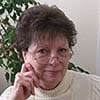Hey, here’s the lineup of May articles and interviews. Don’t miss the audio interview with Christi Phillips, author of The Rossetti Letter, and many other interviews and how-to articles.
Thousands of articles and interviews
Thousands of articles and interviews
with authors and publishing professionals
MAY 1-31, 2007 EDITION
An Exclusive AuthorlinkAUDIO Interview With Christi Phillips,
Authorof The Rossetti Letter (Pocket 2007)
Pocket has introduced a captivating new voice in debut novelist Christi Phillips, author of THE ROSSETTI LETTER. The literary mystery seamlessly moves between 17th century Venice and the present day with the connected stories of two women--the mysterious courtesan Alessandra Rossetti and Harvard University Ph.D. candidate Claire Donovan . . . Full Story (May 2007)
Literary Detective Work Yields Vivid Portrait of Harper Lee
An exclusive Authorlink interviewwith Charles J. Shields,
Literary Detective Work Yields Vivid Portrait of Harper Lee
An exclusive Authorlink interviewwith Charles J. Shields,
author of Mockingbird: A Portrait of Harper Lee (Henry Holt)
by Ellen Birkett Morris
One of the first things Charles J. Shields did when he decided to write a biography of the famously reclusive author Harper Lee is log onto the web site www.classmates.com. The site helps people connect with high school classmates. Using this tool, Shields developed a list of 50 people who had known Lee in high school. . . Full Story (May 2007)
End of Penn's Dancing CareerLeads to New Calling as Novelist
An Exclusive Authorlink InterviewWith Audrey Penn,
End of Penn's Dancing CareerLeads to New Calling as Novelist
An Exclusive Authorlink InterviewWith Audrey Penn,
author of A Kiss Goodbye (Tanglewood, May 2007)
by Susan Van Hecke
“I’m not one of those writers with imagination,” says ballerina turned author Audrey Penn. “If something doesn’t fall in my lap, I’m screwed.” It was what was sitting on the train tracks at a local park that inspired Penn’s New York Times bestseller The Kissing Hand (CWLA, 1993; Tanglewood, 2006), a tender picture book whose second sequel, A Kiss Goodbye (Tanglewood) hits bookstore shelves May 25th. Full Story (May 2007)
SKILL BUILDING
The Art of Fiction
The Art of Fiction
Rules for Avoiding Rejection
by Lisa Lenard-Cook
Do you think you can skip sweating the small stuff (grammar, spelling, manuscript formatting), because that’s what an editor is for? If so, you’re in for a rude awakening come manuscript submission time. No editor will bother to give your manuscript a second glance if you don’t pay attention to the small stuff in the first place. But that’s not the only thing you can do to avoid rejection . . . Full Story (May 2007)
Do you think you can skip sweating the small stuff (grammar, spelling, manuscript formatting), because that’s what an editor is for? If so, you’re in for a rude awakening come manuscript submission time. No editor will bother to give your manuscript a second glance if you don’t pay attention to the small stuff in the first place. But that’s not the only thing you can do to avoid rejection . . . Full Story (May 2007)
Narrative Nonfiction
Crafting a Narrative From life Experience: Part 1
by Lisa Dale Norton
Reader Note: This column is the first of a two-part series to be completedwith my June 1 column.
When you first step up to writing a story about your life, it can feel pretty overwhelming because, well, there¹s just so darn much material! Where do you start? This conundrum is what keeps most people from even trying. Part of being successful at memoir writing is realizing from the get-go that you have to limit the material you cover . . . Full Story (May 2007)
Authorlink Virtual Classroom:New Classes Start in May! Check them out!
Instructor: Bonnie Hearn HillBestselling author of six thrillers For Mira Read all about signing up!
Authorlink Virtual Classroom:New Classes Start in May! Check them out!
Instructor: Bonnie Hearn HillBestselling author of six thrillers For Mira Read all about signing up!
Skill
BuildingJump_Cut:
On Screen Writing Chronology and Three-Act Structure
A monthly screen writing column
by Neil Flowers
Carey Abney is from Philadelphia, an active duty ITSN (Navy) residing in Newport News, VA, and a new reader of this column. He has sent in a question pertinent to all of us who write feature films and hope that they will be sold and produced. It will take two or three of columns to reply fully to Mr. Abney. Here's his question.
Dear Mr. Flowers,
I have a question about your most recent column regarding three-act structure. Since I'm new to screenwriting, I'm constantly studying and researching how to write a great screenplay. In many books about screenwriting . . . Full Story (May 2007)
I have a question about your most recent column regarding three-act structure. Since I'm new to screenwriting, I'm constantly studying and researching how to write a great screenplay. In many books about screenwriting . . . Full Story (May 2007)
Using Digression To Enlarge a Story
by Rochelle Jewel Shapiro
In the introduction to The Art of the Personal Essay (Anchor Books, 1995), p. XXXVII, Philip Lopate writes what is true for a lot of creative writing, not just essays. “The essayist tries to surround something—a subject, a mood, a problematic irritation—by coming at it from all angles, wheeling and diving like a hawk, each seemingly digressive spiral taking us to the heart of the matter.” Two pages later, he adds that digression “serves both structural and comic functions.” Full Story (May 2007)
Doris Booth
Editor-in-Chief Authorlink.com
Manager, Authorlink Literary Group
dbooth@authorlink.com
(972) 650-1986
http://www.authorlink.com/
http://www.authorlink.blogspot.com/
